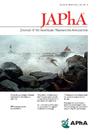Primary care team member’s perceptions of credentialed and privileged clinic pharmacists and impact on clinic workload in a pediatric primary care network
IF 2.5
4区 医学
Q3 PHARMACOLOGY & PHARMACY
Journal of the American Pharmacists Association
Pub Date : 2024-08-02
DOI:10.1016/j.japh.2024.102200
引用次数: 0
Abstract
Background
Pharmacists provide increased access to care, vaccinations, and medication management for patients. Credentialing and privileging of pharmacists allow pharmacists to practice at the top of their licenses and elevate pharmacy practice.
Objective
The primary objective of this study was to assess the perception of health care team members of credentialed and privileged pharmacists working in a pediatric primary care network (PCN) before and after implementation of pharmacist privileges. The secondary objective was to determine team members’ perceptions on the amount of time spent refilling medications, resolving medication access issues, and ordering vaccines before and after implementation of pharmacist privileges.
Methods
This was a prospective pre-post study using surveys to capture health care team members’ perceptions of credentialed and privileged ambulatory care pharmacists. Surveyed participants included attending physicians, advanced practice nurses, registered nurses, licensed practical nurses, medical assistants, and patient care assistants. Summary statistics are reported as frequencies and percentages. Statistical analysis was conducted using SAS version 9.4.
Results
Fifty-eight preprivileging and 56 postprivileging surveys were distributed. The return rate was 79.3% (n = 46) for preprivileging and 80.4% (n = 45) for postprivileging surveys. More than 90% of respondents had a favorable perception of credentialed and privileged pharmacists in the clinic. There was a significant difference in the perception of the amount of time spent on medication access issues after pharmacist privileges were implemented (P = 0.0296).
Conclusion
Credentialed and privileged pharmacists in a pediatric PCN are viewed favorably by clinic team members and can have a positive impact on clinic workload.
在儿科初级保健网络中,初级保健团队成员对有资质和有特权的诊所药剂师的看法以及对诊所工作量的影响。
背景:药剂师为患者提供更多的医疗服务、疫苗接种和药物管理。药剂师的资格认证和特权授予使药剂师能够在其执照的最高级别执业,并提升药学实践水平:本研究的主要目的是评估医疗团队成员在实施药剂师特权前后对在儿科初级医疗网络工作的认证药剂师和特权药剂师的看法。次要目标是确定团队成员在实施药剂师特权前后对重新配药、解决用药问题和订购疫苗所花费时间的看法:这是一项前瞻性的事前事中研究,通过调查了解医疗团队成员对有资格证书和特权的非住院医疗药剂师的看法。参与调查的人员包括主治医生、高级执业护士、注册护士、执业护士、医疗助理和患者护理助理。汇总统计以频率和百分比的形式报告。统计分析使用 SAS 9.4 版进行:共发放了 58 份筛选前调查问卷和 56 份筛选后调查问卷。筛选前调查的回收率为 79.3%(46 人),筛选后调查的回收率为 80.4%(45 人)。超过 90% 的受访者对诊所中的持证药剂师和特权药剂师有好感。在实施药剂师特权后,受访者对药剂师在用药问题上所花费时间的看法存在明显差异(p = 0.0296):结论:儿科初级保健网络中获得资格认证和特权的药剂师受到诊所团队成员的好评,并能对诊所的工作量产生积极影响。
本文章由计算机程序翻译,如有差异,请以英文原文为准。
求助全文
约1分钟内获得全文
求助全文
来源期刊
CiteScore
3.30
自引率
14.30%
发文量
336
审稿时长
46 days
期刊介绍:
The Journal of the American Pharmacists Association is the official peer-reviewed journal of the American Pharmacists Association (APhA), providing information on pharmaceutical care, drug therapy, diseases and other health issues, trends in pharmacy practice and therapeutics, informed opinion, and original research. JAPhA publishes original research, reviews, experiences, and opinion articles that link science to contemporary pharmacy practice to improve patient care.

 求助内容:
求助内容: 应助结果提醒方式:
应助结果提醒方式:


